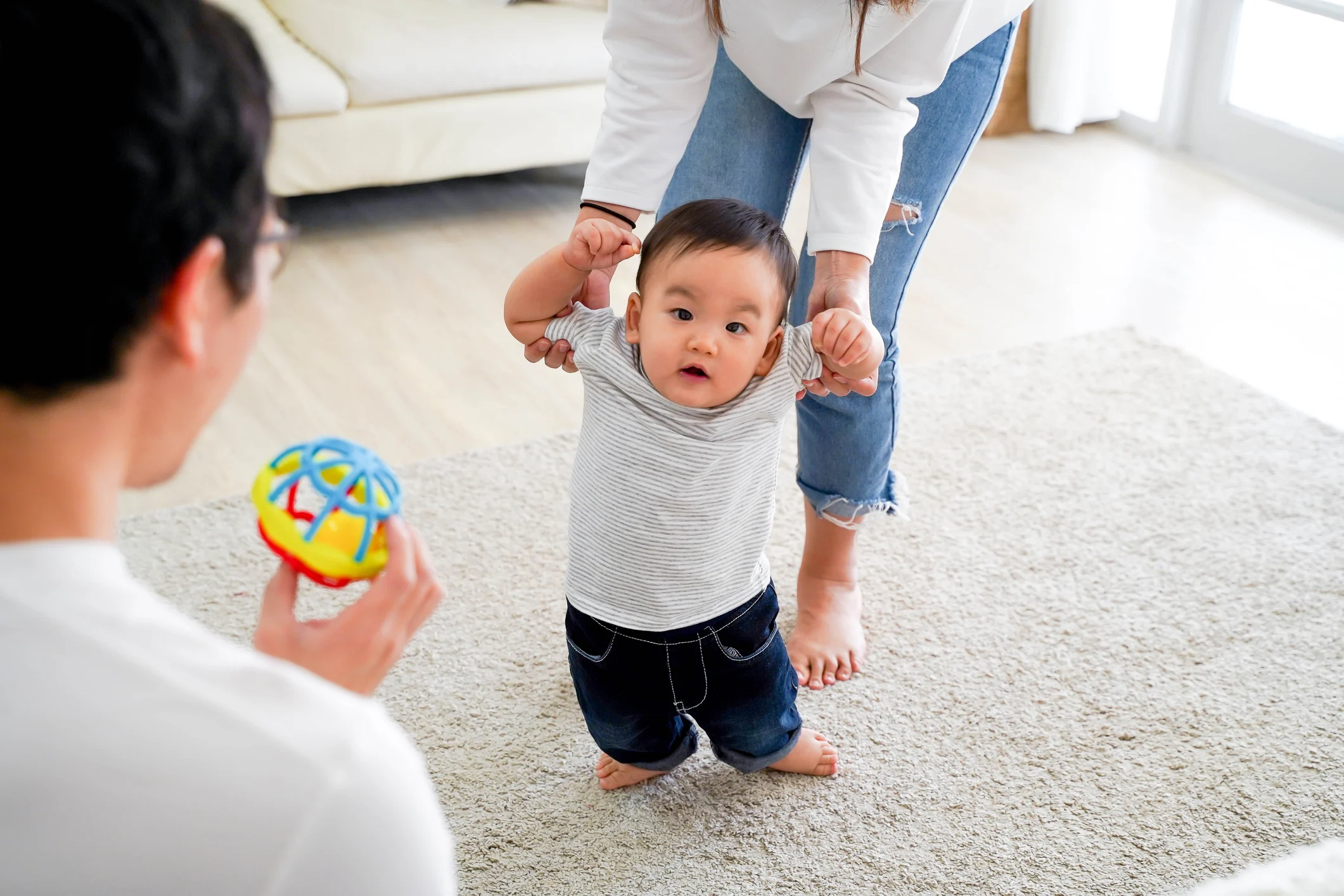mchec.org – A baby’s first steps are a monumental milestone in their development, marking the transition from infancy to toddlerhood. This exciting phase is not just about walking; it’s about gaining independence and exploring the world. Understanding how to encourage movement and mobility can help parents support their child’s physical and cognitive growth during this critical time.
The Developmental Journey to First Steps
Before a baby takes their first steps, they go through various stages of movement, including rolling, sitting, crawling, and standing. Each stage strengthens their muscles, enhances coordination, and builds balance, all of which are essential for walking. Recognizing and supporting these developmental stages is crucial for encouraging a baby’s mobility.
Encouraging Crawling
Crawling is a significant precursor to walking, helping babies develop the upper body strength and coordination needed for upright movement. To encourage crawling, provide plenty of tummy time to strengthen neck and shoulder muscles. Place toys just out of reach to motivate your baby to move towards them, and create a safe, open space for exploration.
Promoting Standing and Cruising
Once babies can pull themselves up to stand, they begin to “cruise” along furniture, strengthening their leg muscles and improving balance. Encourage this stage by ensuring that furniture is stable and within reach. Providing sturdy, child-sized furniture, like a low table or push toy, can also support their standing and cruising efforts.
Supporting First Steps
When babies are ready to take their first independent steps, they need encouragement and a safe environment. Encourage walking by standing or kneeling a short distance away and calling them to you. Hold their hands for support as they gain confidence, and offer praise and encouragement for their efforts.
Creating a Safe Environment
Safety is paramount as babies begin to explore their surroundings on foot. Childproof the home by securing furniture, covering sharp corners, and removing obstacles. Ensure that floors are free from slippery surfaces and that stairs are blocked off with safety gates. A safe environment allows babies to focus on their movements without the risk of injury.
Choosing the Right Footwear
Barefoot is best for babies learning to walk, as it allows them to feel the ground and develop balance naturally. When shoes are necessary, choose flexible, lightweight shoes with non-slip soles that support natural foot movement. Proper footwear can protect their feet while still allowing for the development of strength and coordination.
The Role of Play in Mobility
Play is a wonderful way to encourage movement and mobility. Activities like dancing, playing with balls, and using ride-on toys can promote balance and coordination. Interactive games that involve reaching, bending, and stretching also enhance physical development and are a fun way to practice new skills.
Encouraging Confidence and Independence
As babies take their first steps, it’s important to foster a sense of confidence and independence. Allow them to explore at their own pace and offer plenty of encouragement and positive reinforcement. Celebrate their achievements, no matter how small, to boost their self-esteem and motivate them to keep trying.
Conclusion
A baby’s first steps are a thrilling achievement, representing growth, curiosity, and newfound independence. By understanding and supporting the stages of movement leading to walking, parents can help their child develop the skills necessary for mobility. With patience, encouragement, and a safe environment, parents can make this developmental journey a joyful and successful experience for their little one.


